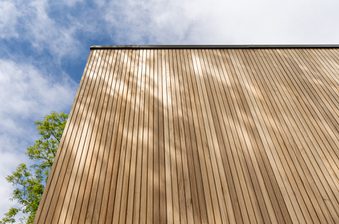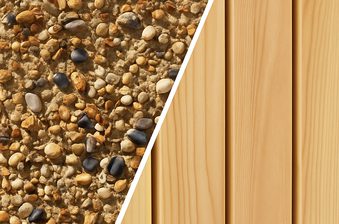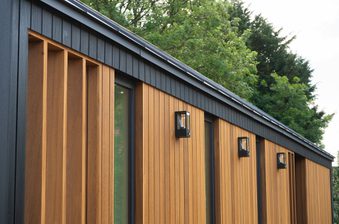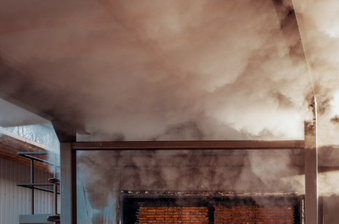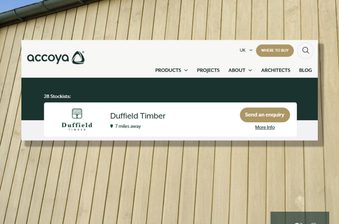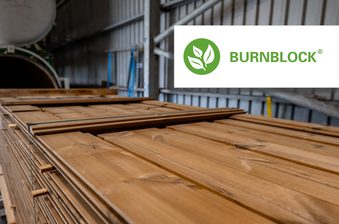For adding value and kerb appeal to your property, timber cladding is just the ticket.
After a sleek, contemporary look? A bold, daring design? Or just an smart, eye-catching flourish? Timber cladding offers you the chance to get creative. Perfect for home improvers, architects, designers and self-builders wanting to take their exterior to the next level.
Our team has pulled together some design inspo and trends, featuring a few cladding projects we've recently worked on!
1. Go vertical for a clean, contemporary feel
The most traditional orientation for cladding a house or outbuilding is horizontal, running along the lines of the brickwork.
Vertical, however, is now in vogue — especially when a narrow board is used to clad a full length of an exterior wall. This style provides the eyes with a smooth, clear, linear path and can add the impression of height.
Shadow gap is a particularly popular profile for this; as light falls across the building, the gaps between the slats create subtle linear shadows.
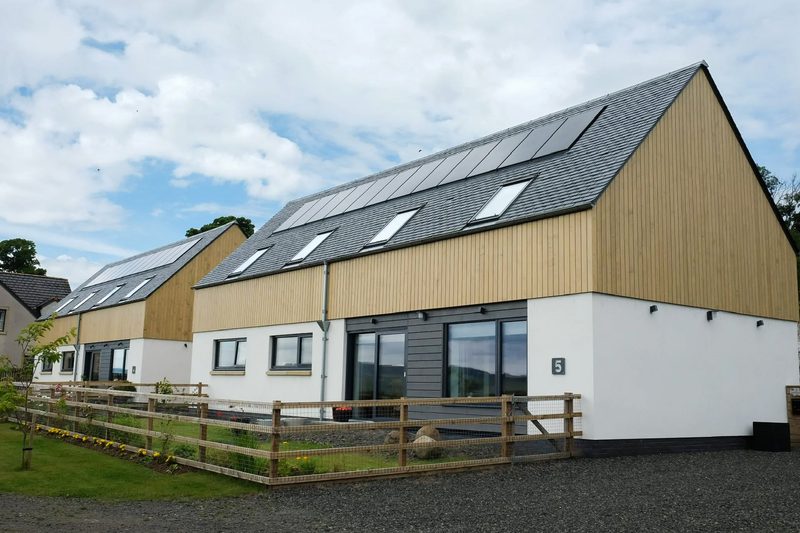
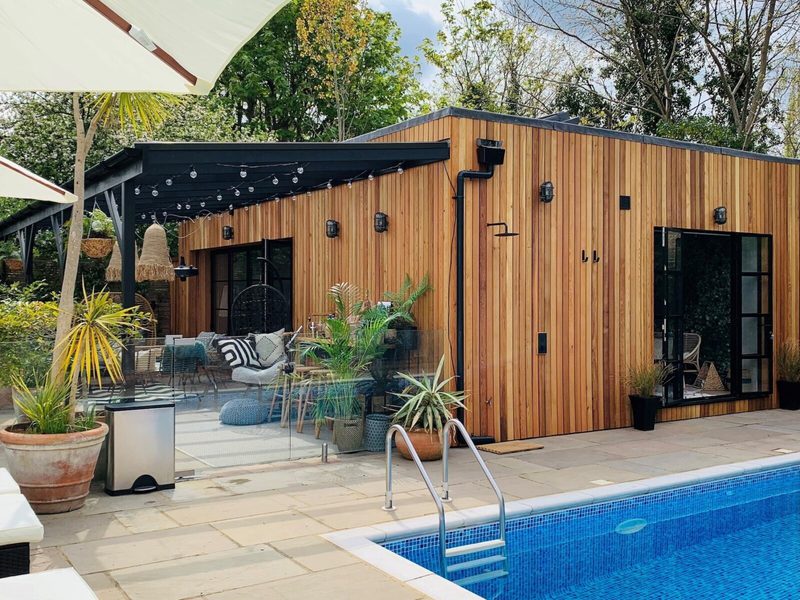
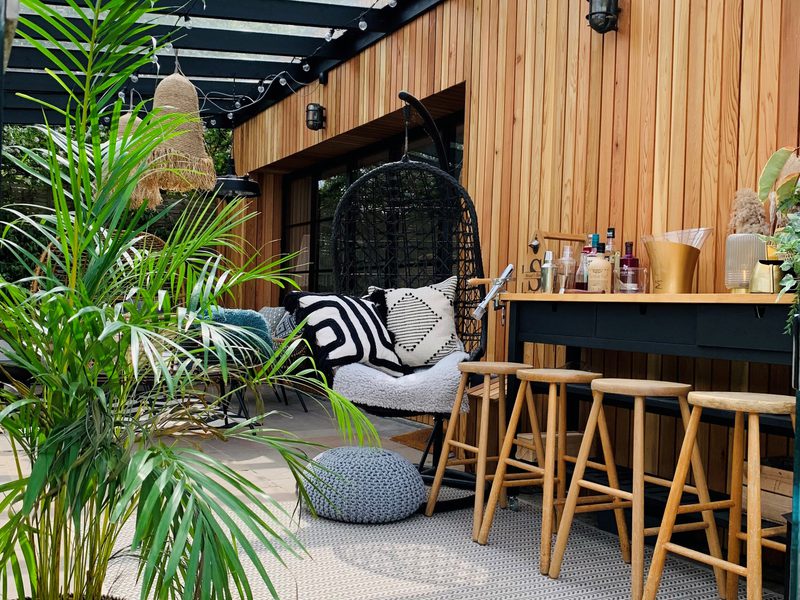
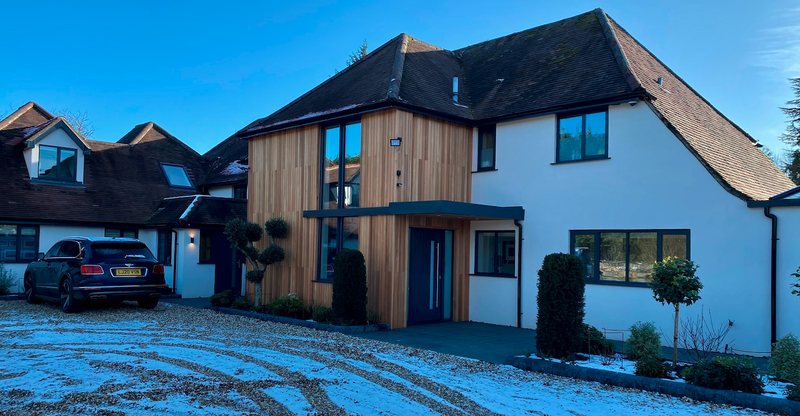
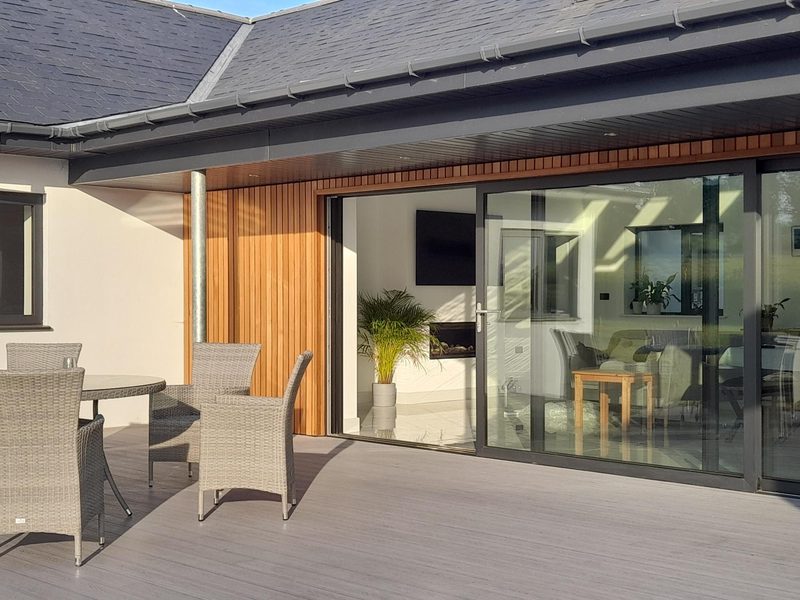

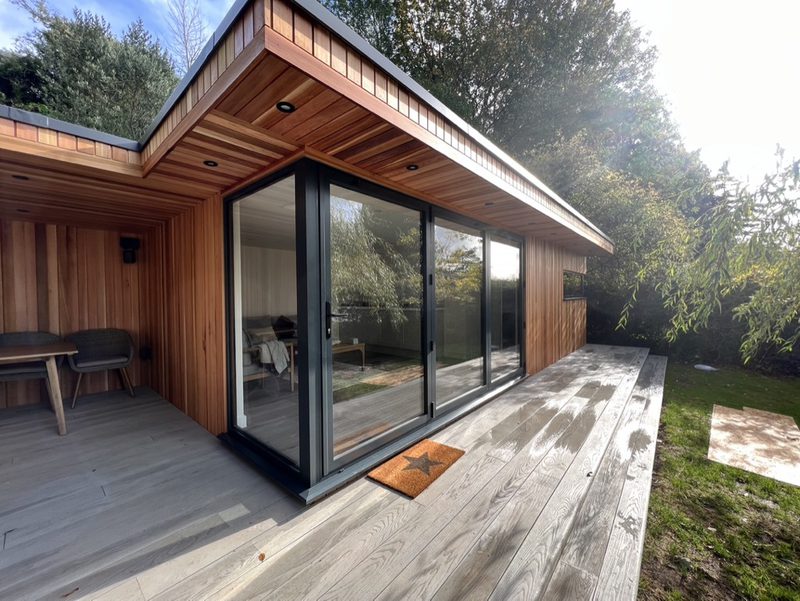


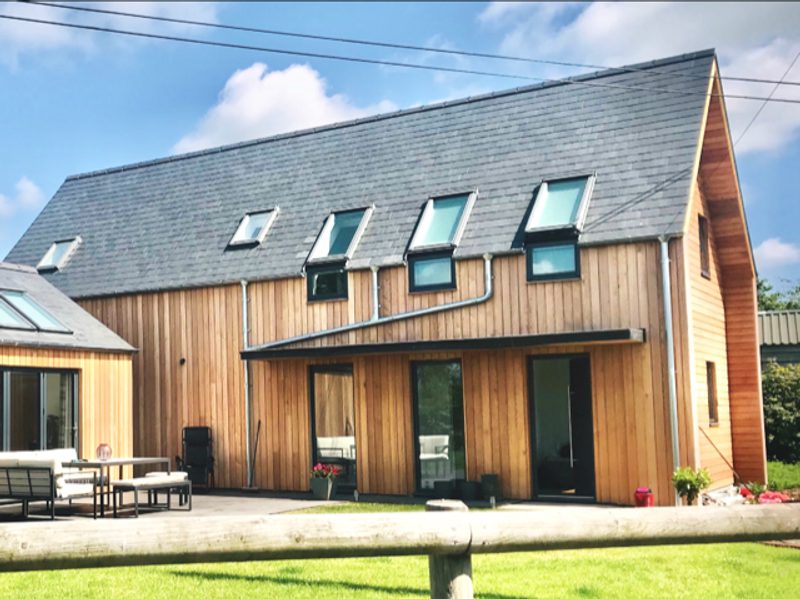

If you’re stuck deciding what might work best for your particular project, you might find our blog post on horizontal, vertical or mixed cladding to be helpful.
2. Weathered ‘old look’ grey cladding
Digging the subtle grey tones of weathered wood? You’re not alone. Interestingly, for many designers, the natural colour of wood is taking a backseat in favour of the silver fox.
Grey weathered timber is rapidly gaining a refined, rustic reputation and a characterful, graceful grayscale look — ideal for keeping things as natural as possible.
This weathering process can be achieved straight out of the factory with products like SiOO:X, or can be left to happen naturally.
Using a woodcare finish that has no UV filters — such as Owatrol H4 Wood — will allow your cladding to age gracefully whilst fully protecting from any water damage.
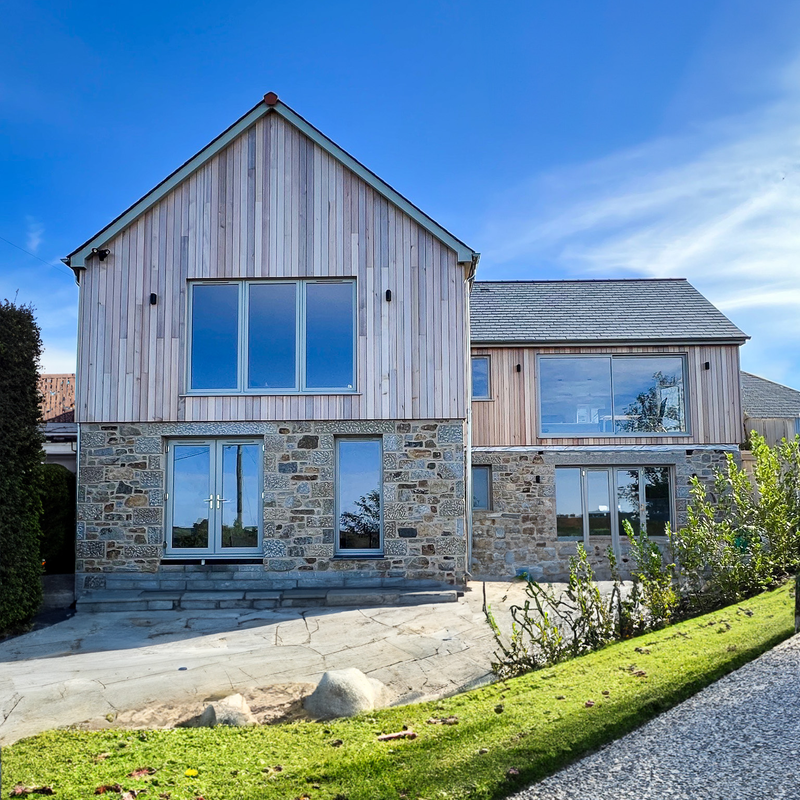
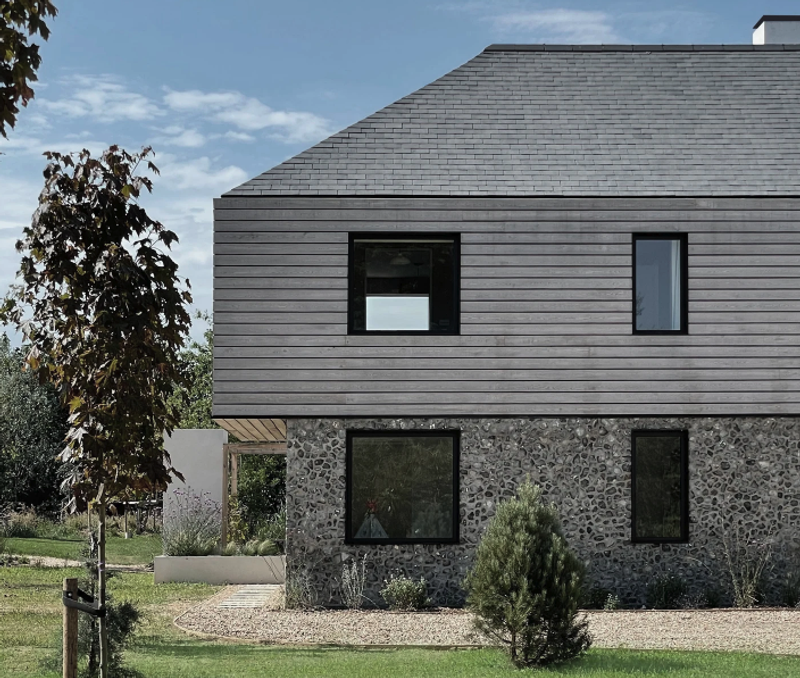
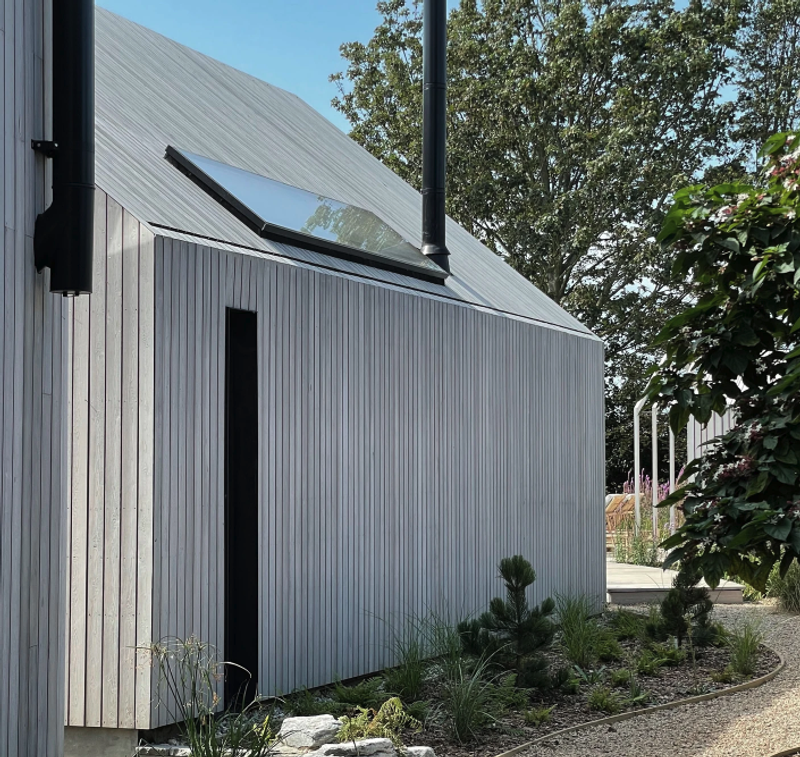


Any timber will naturally turn grey over time through weathering, but a few cladding favourites include Western Red Cedar, Douglas Fir, Alaskan Yellow Cedar and Siberian Larch. Applying Owatrol H4 Wood will give it plenty of protection.
Or, as we mentioned just earlier, SiOO:X is a great factory treatment for getting those grey hues straight away.
3. Join the dark side with coated (or charred look) cladding
To continue the monochromatic theme, architects have a growing fascination for the magical, mysterious, atmospheric vibes offered by black.
This trend can be achieved through pre-painted black whitewood cladding or by using charred cladding. The latter is created using the centuries-old Japanese technique for burning and preserving wood — Yakisugi (焼杉).
As well as delivering a striking charcoal-black finish for a clean, crisp design, the charring process protects the timber, guarding against water damage, insect attack and fire. To give the wood its distinctive texture, the charred timber is lightly wire brushed.
Certainly great for creating an arresting, daring contemporary space.
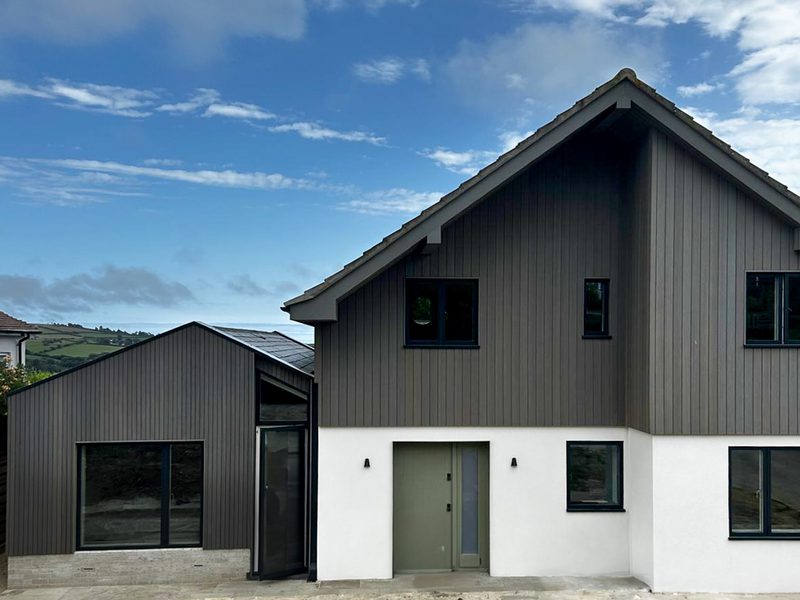
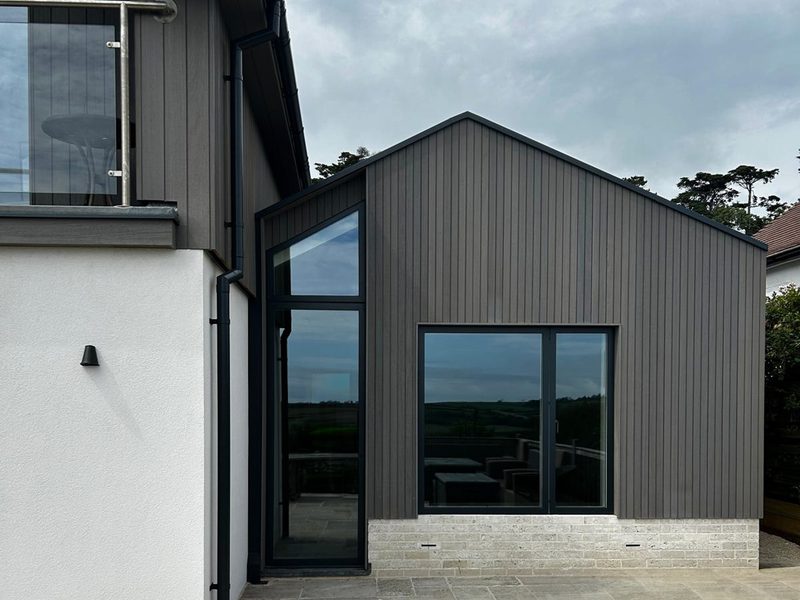
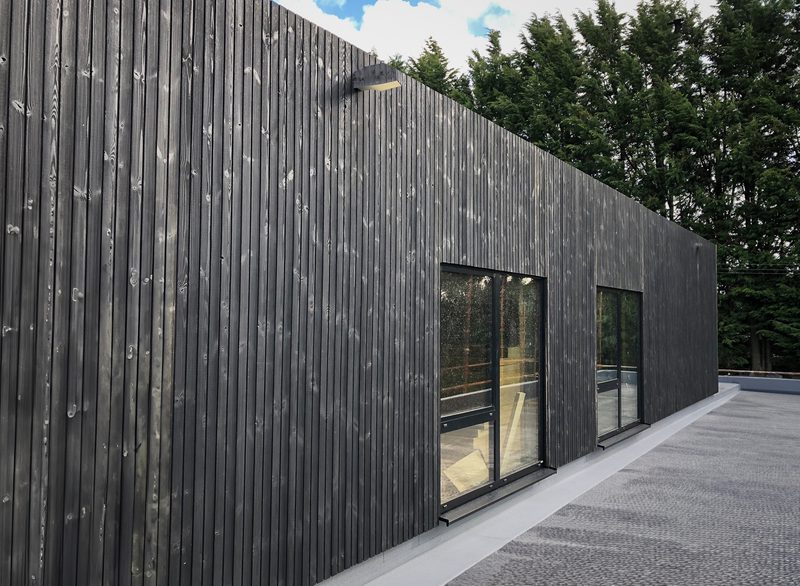
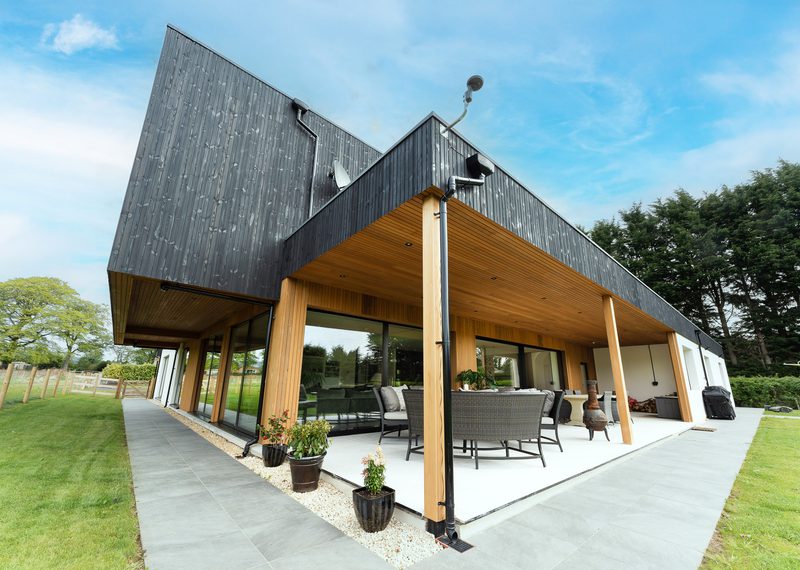
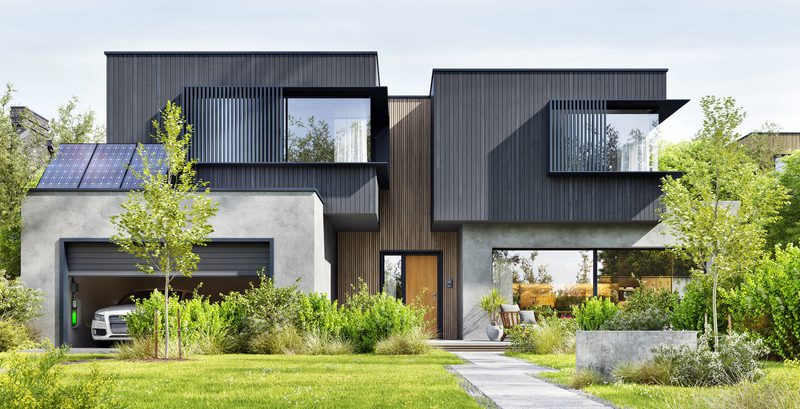
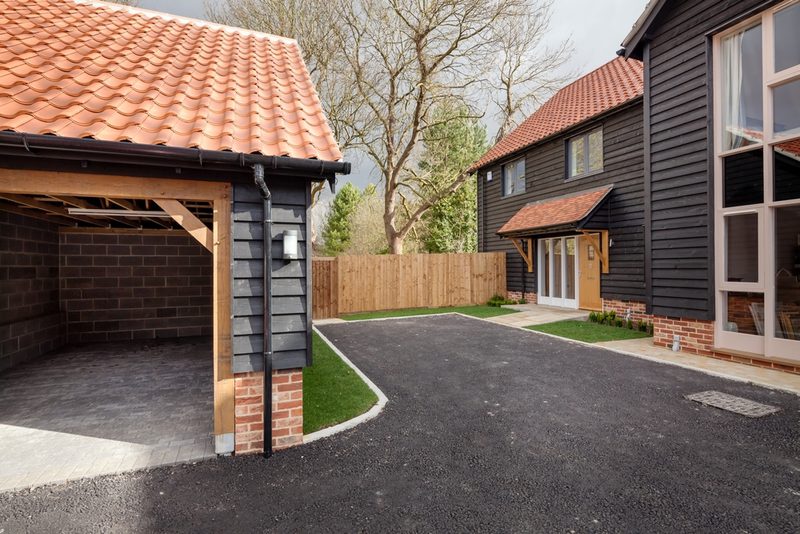
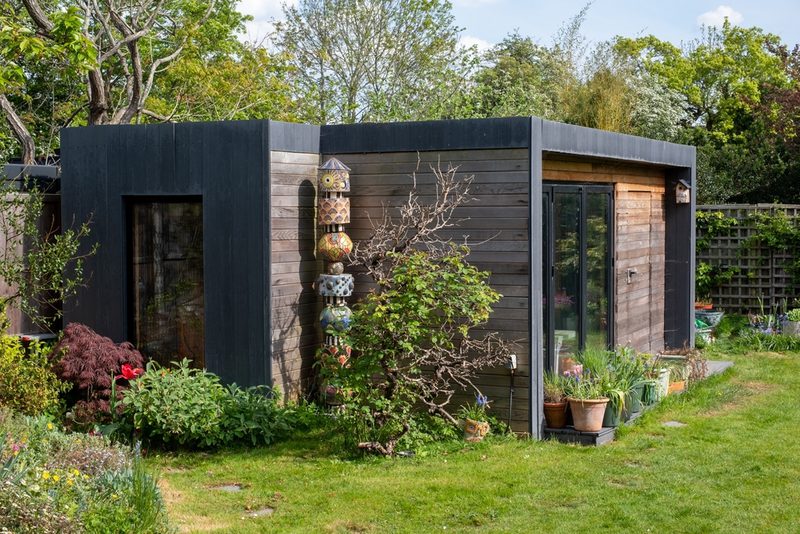

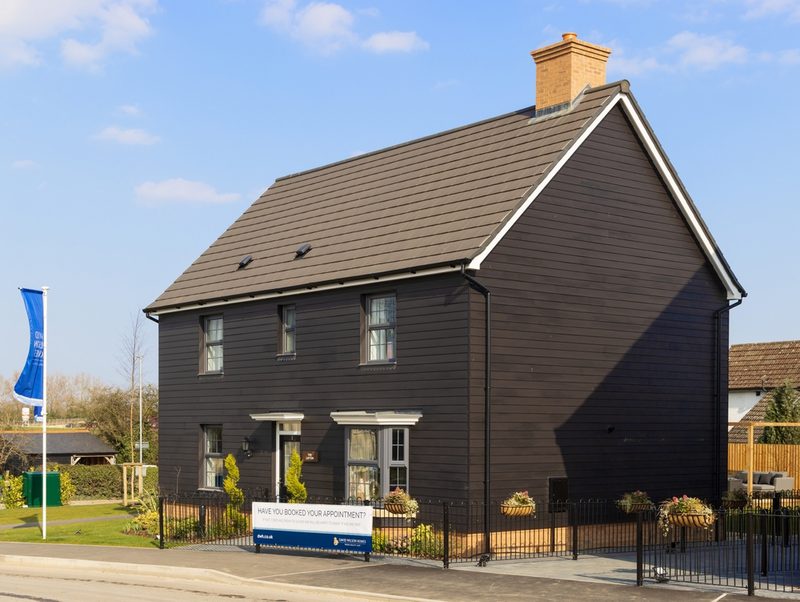
4. Turn up the heat with thermally-modified timber
Like the luxurious look of expensive tropical hardwoods, but working to a tighter budget? Introducing heat-treated options like Thermo-Pine, Thermo-Ayous and Thermo-Tulipwood CAMBIA®.
Not only does the sustainable thermal modification process bestow the wood with excellent functional properties and durability, but it produces an alluring, clear-grade darker shade of brown, mimicking opulent African hardwoods like teak at a fraction of the cost.
Great for creating a space that has an environmental touch.
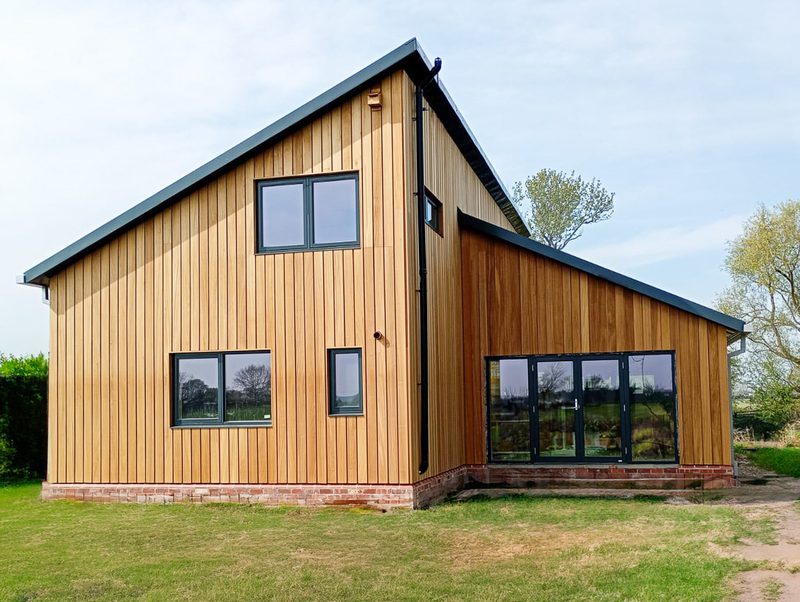

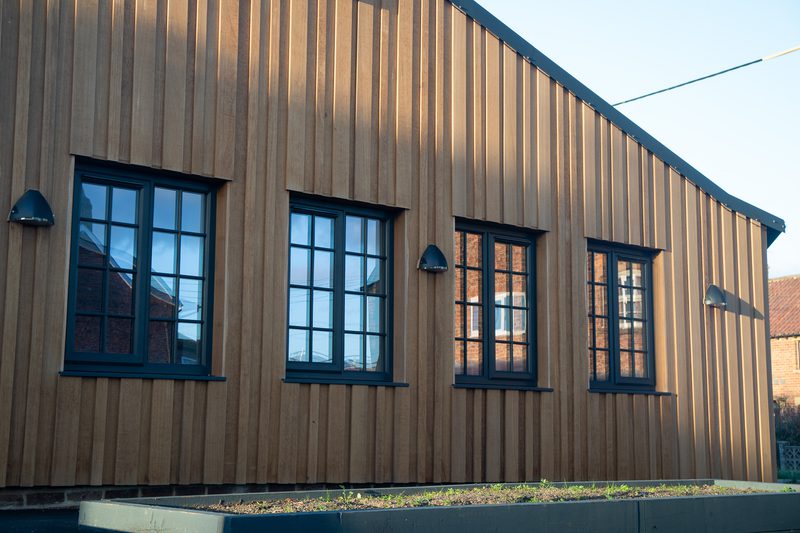
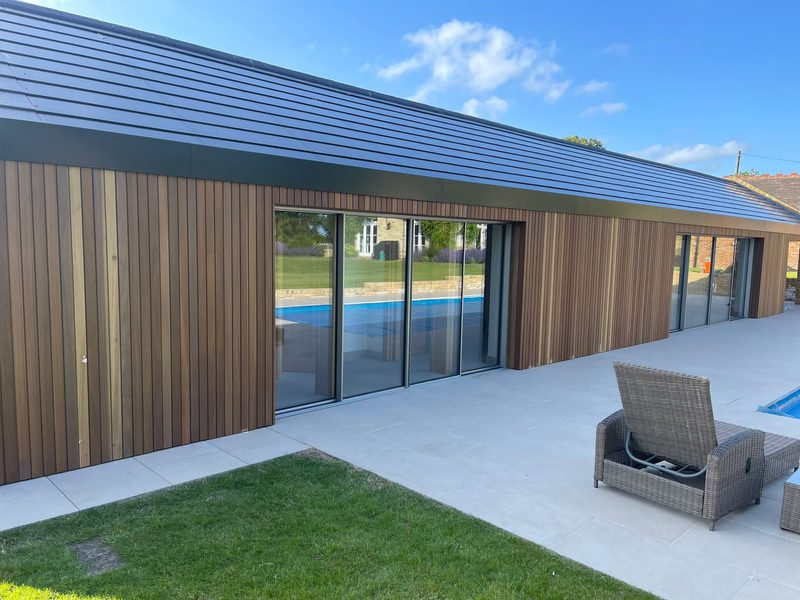
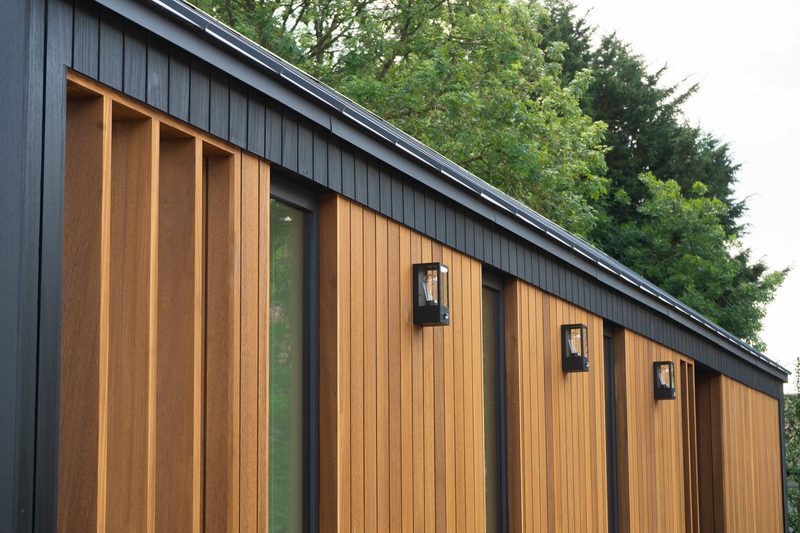
5. Channel rustic charm
The natural, characterful looks so effortlessly achieved by rustic waney or feather-edge cladding have gained it many architectural admirers. Surprisingly versatile, waney-edged cladding can also provide a refreshing contrast when used on any property situated in a built-up urban environment.
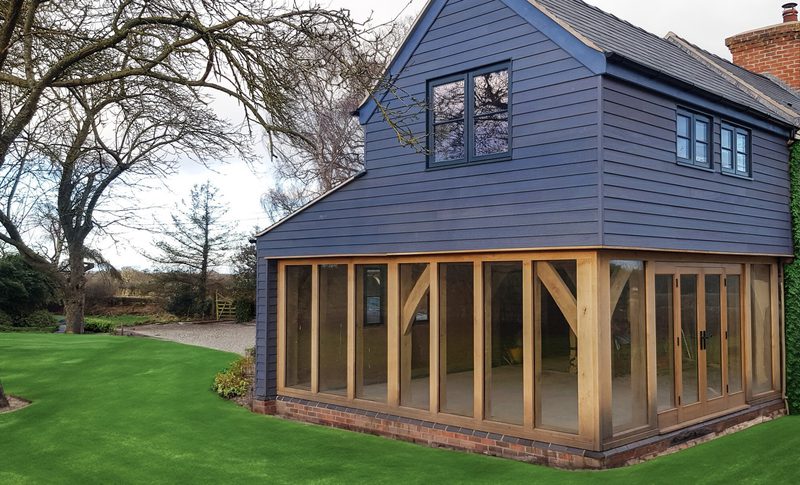
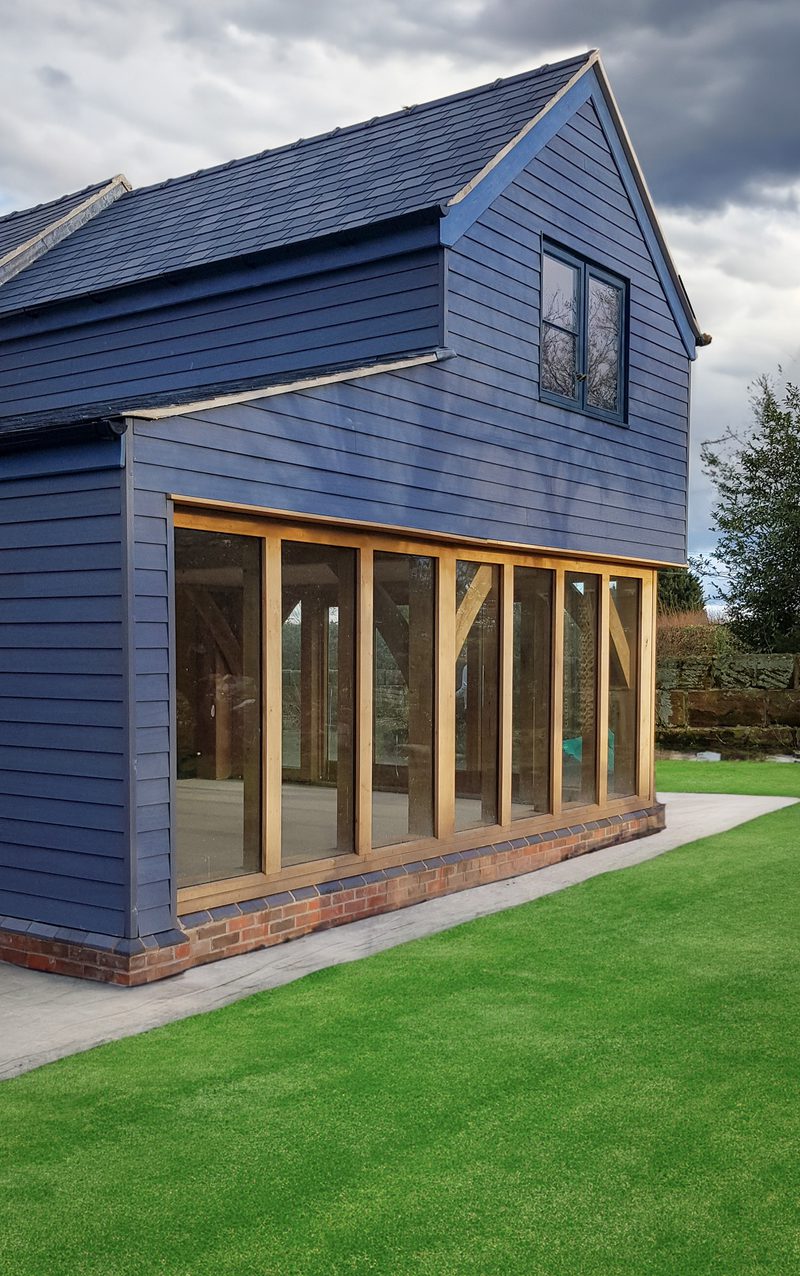

Or you could just simply opt for a character-rich species like Siberian Larch or Douglas Fir. Their knots and swirls provide plenty of no-nonsense beauty.
It’s about creating a nature-connected space with a warm, inviting and uncomplicated feel.
Perfect for creating a seamless transition between surrounding greenery and your exterior garden-facing wall or summer house, or for a barn conversion.
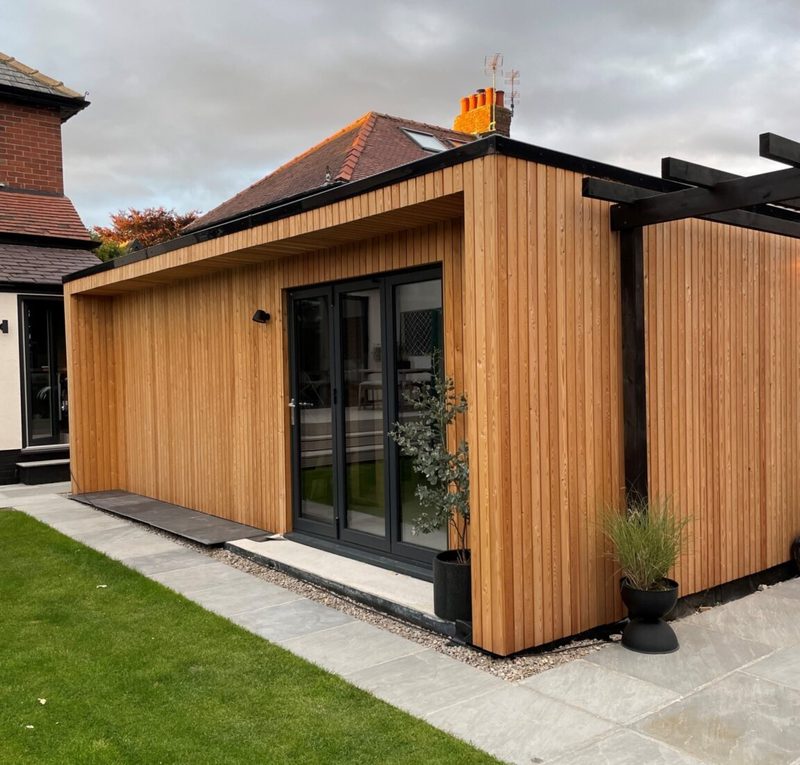
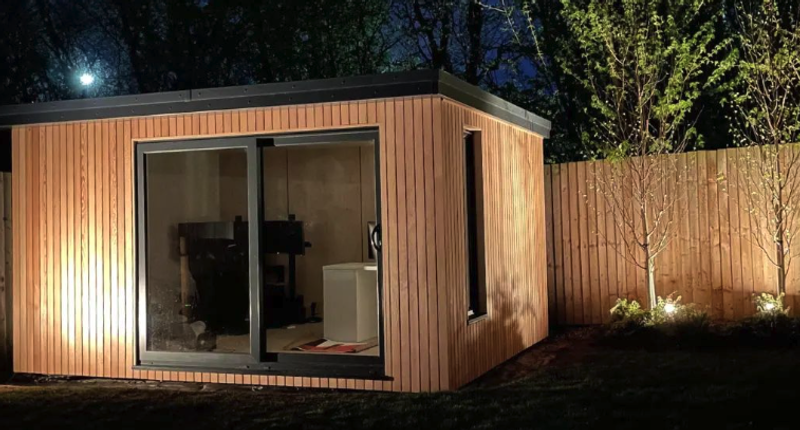
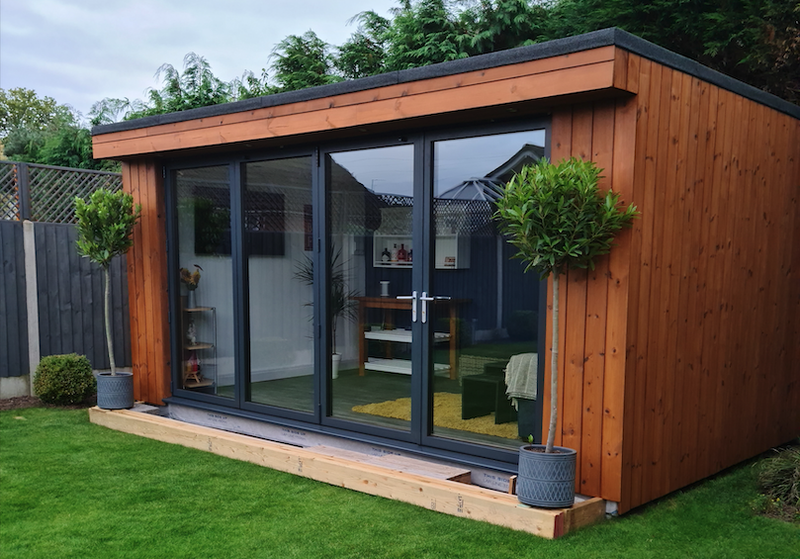
It’s ideal for those creating a garden room, summer house or wanting to reflect a rural, countryside feel for a barn conversion or period property.
6. Experiment with your profile choice
Whilst tried-and-tested profiles like V-groove and shiplap will always have their place, you might want to seize the opportunity to try something different. Cladding panels can be fabricated with various different profiles.
Arrange yours to form a mix of patterns and sizes — perhaps with a combination of V-groove, shadow gap, shiplap, rainscreen or feather-edge.
Maybe you like the idea of rainscreen cladding, but instead of the rhombus style, you’d prefer a straight edge, or a straight edge with a rounded corner? We machine all of our timber to profile on site and love being able to work with our customers to create something customised for their property and vision.
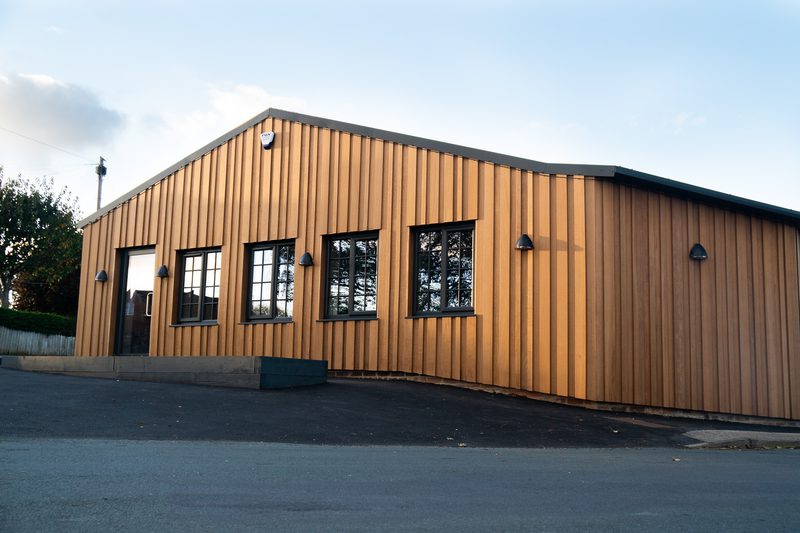
Heads can also be turned by throwing in some diagonal cladding.
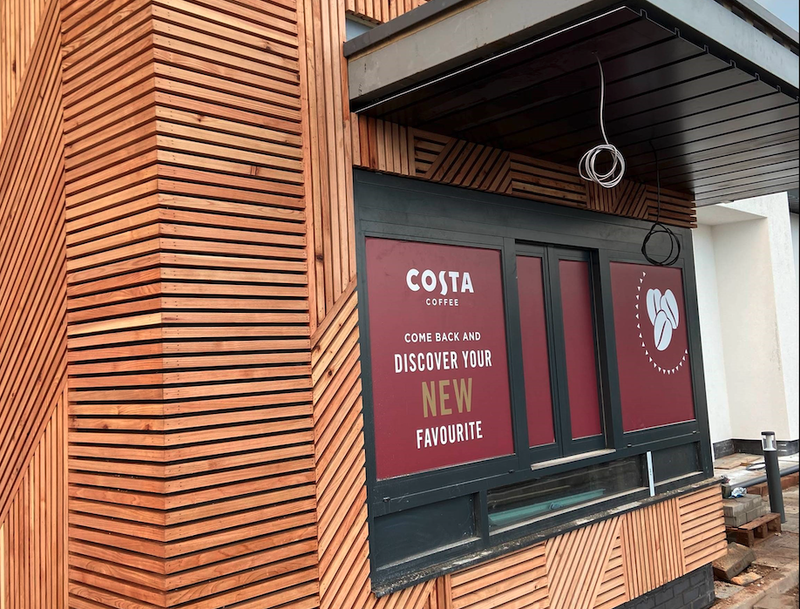
Another profile that has trended for a number of years now (and doesn’t show any sign of stopping) is secret nail — with an extended top half to the rear that conceals fixings, this allows you to make a clean, contemporary statement.
7. Finish with a flourish
Just a little can go a long way, whether that's to frame your patio doors or just add a bit of character to a few walls on your house.
This might also be a feature wall (or accent wall) — fabulous for adding energy, texture and personality. You could also turn it into a multi-specie wall for a really striking, totally unique pattern!
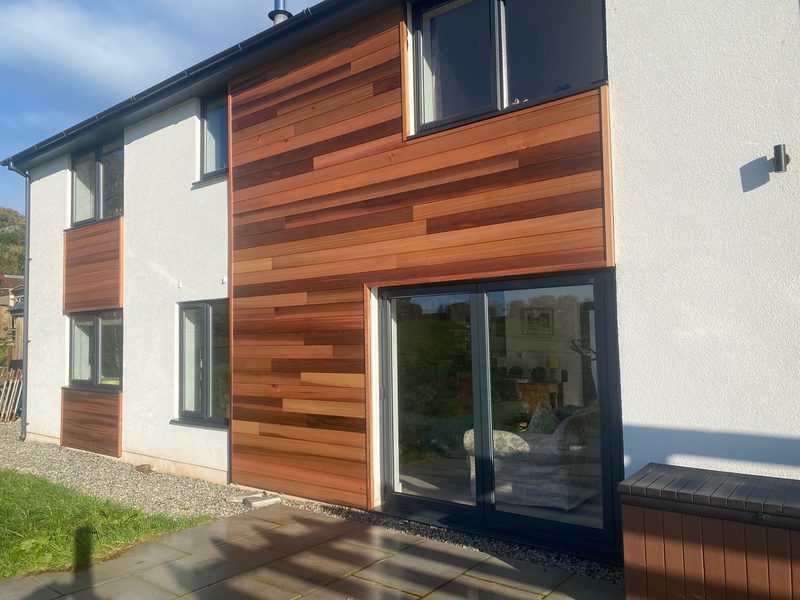
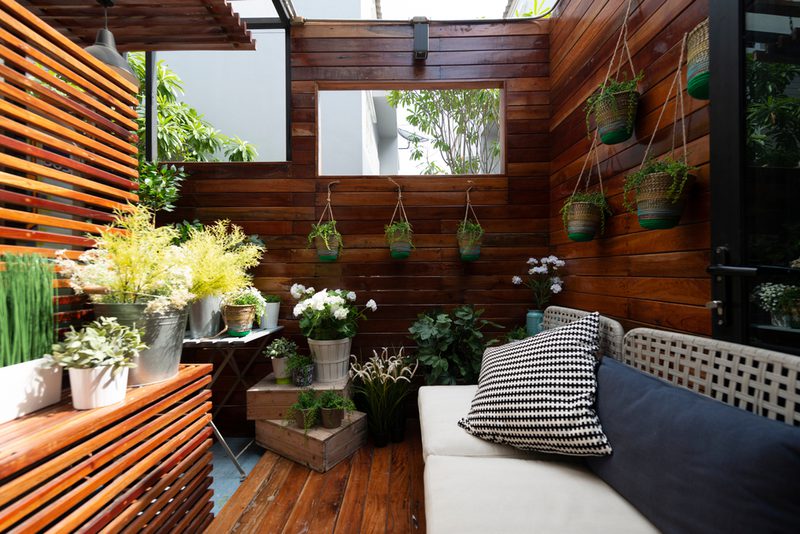
For those looking to make a statement, consider departing from the norm — perhaps with a tropical African species, like Zebrano (also known as Zebrawood). It's guaranteed to make an impact, so called as a result of its eye-catching cream and light brown colour with dark brown-black streaks.
Then there’s Iroko, known as ‘African teak’ by virtue of its phenomenal physical character and exotic golden-yellow-to-brown hues.
Just be sure they're sourced responsibly from a merchant with a clear environmental commitment (like us!).
Ready to start your cladding project?
After even more inspiration? Take a look at a few of our recent cladding projects. Or, if you think you know what you're after, contact us today.
At Duffield Timber, we’re a leading UK stockist and supplier of sustainably-sourced timber cladding. We’re proud to offer an unrivalled range of quality species from right across the world, all machined to profile on site.
However big or small your project, we can help.
Get in touch today

